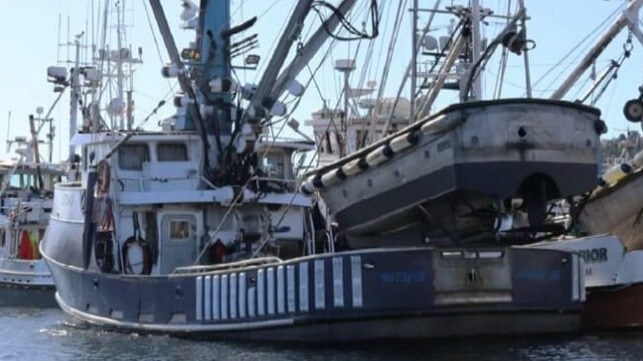Leak in a Void Space Likely Caused Sinking off Prince of Wales Island

The NTSB has finished its investigation into the loss of the fishing vessel Hotspur off Prince of Wales Island in 2022, and it has concluded that an undetected leak in an unoccupied space probably sent the ship down.
Hotspur was built in 1988 and fitted as a purse seiner. Stability regulations do not apply to vessels of Hotspur's size and age, so the vessel's design was not required to comply with any stability criteria.
The master was the owner of the vessel, and he had nearly 40 years of experience in the industry. He was the only credentialed mariner on the crew.
On July 29, 2022, the vessel left Port Townsend, laden with its nets and gear. It headed north up the Inside Passage, bound for Sitka. The weather conditions were favorable.
On August 2, the vessel was crossing the Clarence Strait. At about 1935 hours in the evening, the master and senior deckhand noticed that Hotspur was listing to port. The master went below to check the engine room and the bilges. He told investigators that "everything looked normal" on inspection, so he tried to correct the list by transferring fuel from a tank on the port side to a day tank on the starboard side.
However, the list continued to increase, and the senior deckhand noticed that the water was running up onto the aft deck at the port quarter.
Recognizing the seriousness of the situation, the captain sent the senior deckhand to gather the other crewmembers and prepare the life raft. He made a distress call via VHF, and two nearby good samaritan boats responded.
The Hotspur continued to list further to port as the crew launched the liferaft. The captain and his crewmembers rowed safely away from the boat as it rolled over, and they set off several signal flares to show their position. Within minutes, Hotspur was fully inverted, according to the captain.
The two good samaritan boats arrived shortly after and retrieved all five crewmembers for transport to Ketchikan. No injuries were reported.
Hotspur ultimately sank with about 1,100 gallons of fuel on board. The vessel was declared a total loss at a value of about $1.2 million. No salvage efforts were attempted.
NTSB noted that the master had "poked a hole in the hull" while cleaning sludge out of the engine room bilges earlier in the season, requiring a drydocking for wasted and corroded steel. This was three weeks before the accident voyage. NTSB could not rule out that deteriorated hull plating could have caused flooding in another area, like the lazarette or the port side void space, where it could have gone undetected.
After the accident, the master told NTSB that he could not remember when the bilge alarms for the lazarette and the void spaces had last been tested. The last recorded test was in 2015, when a Coast Guard exam found that the alarms were in good condition. NTSB's investigators reasoned that these two bilge alarms may have been inoperable on the accident voyage because they did not sound until it was too late.
NTSB also left open the possibility that the deck load of nets and gear may have exceeded the margin of safety for stability, but as the vessel had no stability booklet, it is not possible to calculate.
Hotspur also had slack tanks, and it was carrying just 1,100 gallons of diesel out of 8,000 gallons of capacity. This raises the prospect that free surface effect may have played a role in accelerating the capsizing, the agency said.
NTSB concluded that flooding from an unknown source in the lazarette or port void space likely caused the casualty. The agency advised operators to test their bilge alarms regularly, since the devices provide the only available early warning of void space flooding.
